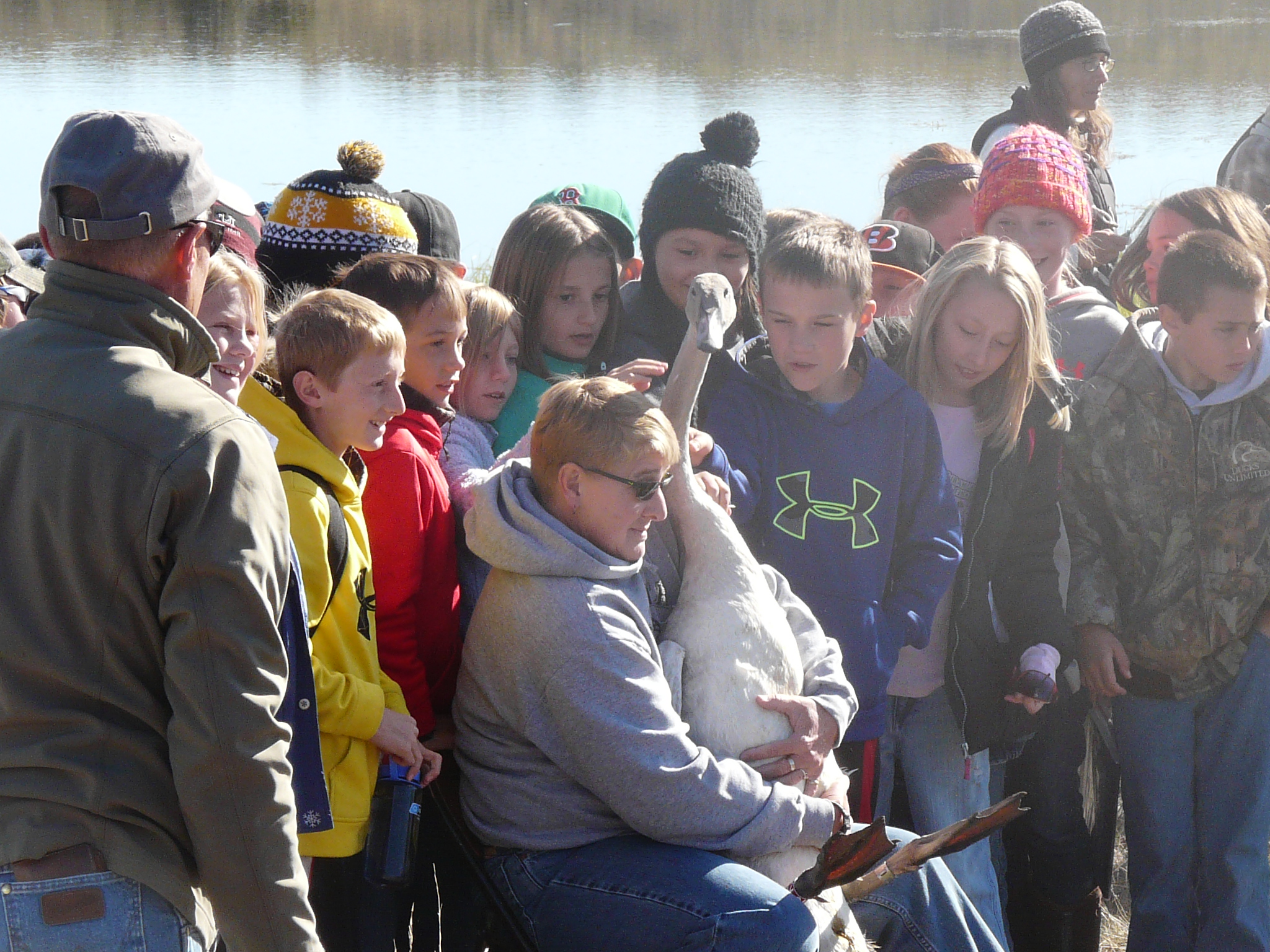The Blackfoot Watershed gained five Trumpeter Swans in early September, with the release of 5 cygnets cheered on by 150 schoolkids from schools throughout the watershed and beyond.

In past years, 1-year-old or even 2-year-old captive swans were released in the Blackfoot in May. This year, however, only cygnets hatched last spring were available for release, and they would have been too vulnerable to danger without an adult around, had they been released earlier in the year. Thus, a September release of gray swans! The young swans had not yet learned to fly, but were almost old enough to start.
These swans sport no red collars because fitting them safely yet securely on young swans still growing would be risky. After receiving leg bands, they were all released together.
Following the release, students attended five stations where volunteers guided them in learning about different aspects of swans and wetland ecology.
Meanwhile, the young swans were getting used to their new habitat and freedom.
After their release, the swans spent the next several weeks feeding on the lake and meeting some of their neighbors, adult swans from nearby wetlands that would fly in for brief periods. The cygnets were first seen flying just less than one month later, when they made a big circle toward Ovando and back. They made similar flights, always returning to their release site, throughout the next few weeks. They were joined on the lake by 0V6, a swan that was released here in 2013 and spent the summer on a nearby wetland. Together, they all flew to a lake a couple of miles to the northwest and spent more of the fall there. They had all left the valley, very likely together, by the time the cold snap arrived in November. This was the first time we have observed newly released swans joining with older, experienced migrants to head south.
